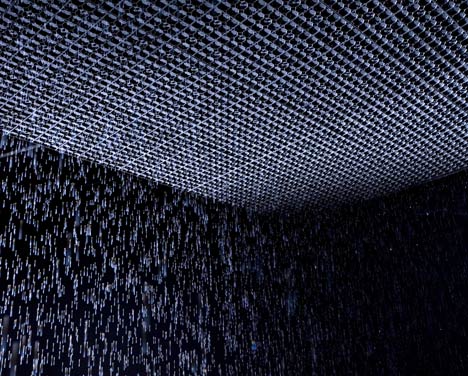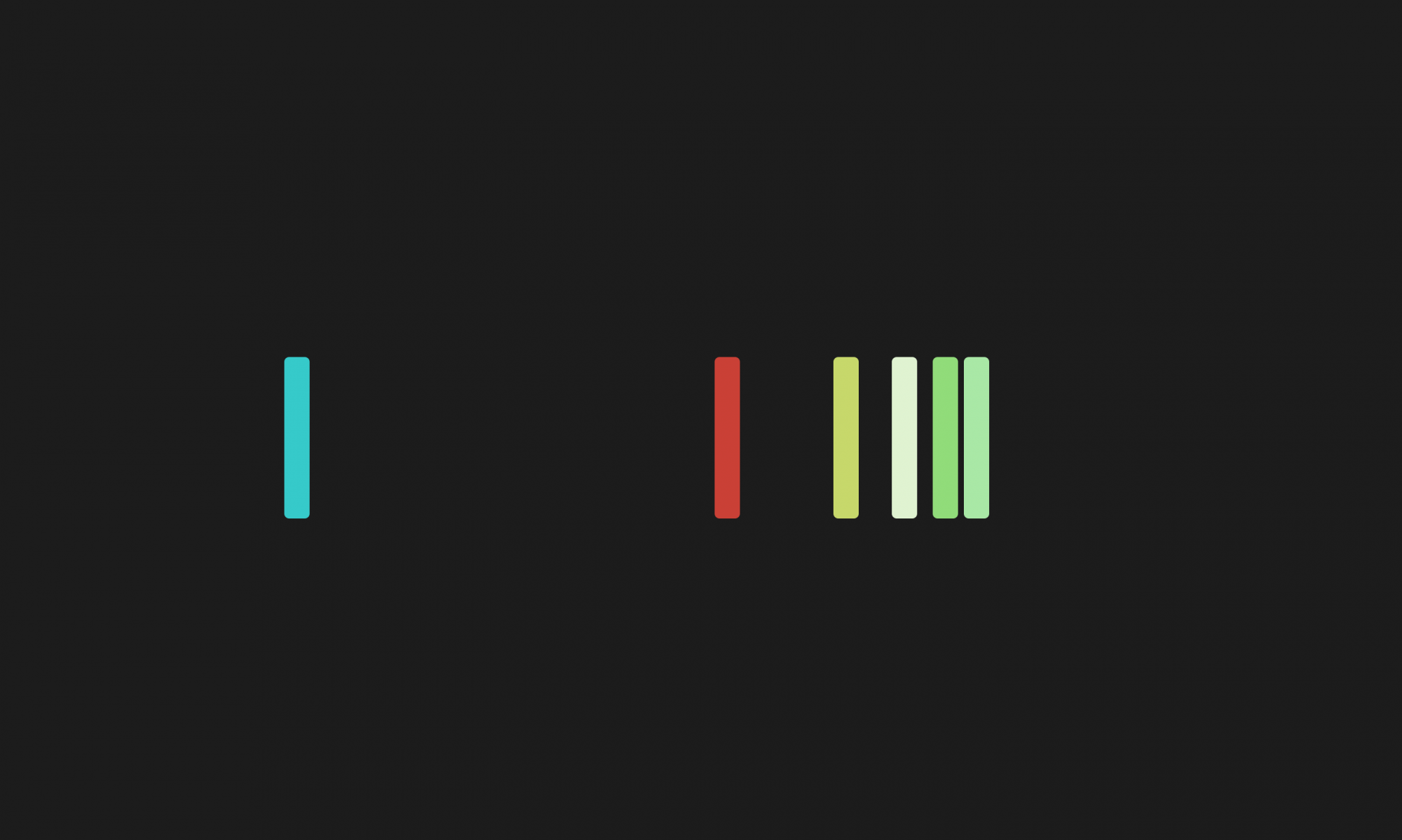Rain room is an interactive, experiential art installation created by Hannes Koch and Florian Ortkrass for Random International. A collaborative studio for experimental practice within contemporary art founded by the two in 2005. It was first shown at the Barbican in London (2012). The installation allows visitors to experience navigating through rain without ever getting wet. A dichotomy that greatly intrigues me. In this essay, I will provide an analysis of the installation including the mechanism of how it functions as well as the concept behind the work by the artists, in its relation to topics of Interactivity as well as Immersion.
Watch the above video to see how Rain Room works!
In order to create this experience, motion sensors are placed around the space to detect the movements of the human body. Over 2500 litres of self-cleaning recycled water is controlled using a computerised system automatically. When sensors in the cameras detect a person’s movement, they signal one of the many water nozzles in the ceiling and the water stops in a rough six-foot radius around the person. Allowing visitors to navigate through the “rain” without getting wet. Due to the nature and size of the work, it is site specific and carries certain limitations in the viewing experience. For example, viewers are only allowed to enter the space for a limited period of 15 minutes and no more than 6 visitors are allowed in the room at the same time. (according to the Sharjah Art Foundation where the work is permanently exhibited)


Like all Interactive Artworks, Koch and Ortkrass has created a feedback and responsive system within Rain Room where visitors are afforded a certain level of agency in the control and creation of the artwork. As what was highlighted in Roy Ascott’s Behaviorist Art and the Cybernatic Vision, Rain room is intended to “draw the spectator into active participation in the act of creation” as well as provide “the opportunity to become involved in creative behavior on all levels of experience – physical, emotional and conceptual.” This is also in line with Random International’s aim in “questioning aspects of identity and autonomy in the post digital age”. The Artists “aim to explore the human condition in an increasingly mechanized world through emotional and physically intense experiences.
Rain room can be understood as a representation of human intervention in the natural environment where human presence prevents rain from falling. It is the artists’ exploration of how human relationships to each other and to nature are increasingly mediated through and filtered through technology. It is my understanding that the message and meaning behind Modern Interactive Art is felt and understood more tangibly than traditional, classical art because of the collaborative nature of the work and ‘control’ given to the viewers to explore the space that also initiates a conversation between the viewer and the artist through the installation. In an interview, Koch and Ortkrass describes the visitor experience that they have intended. “We don’t really have set ideas. I think that the whole point of setting it up to see how (and) what they experience they have, and how they perceive it respond it and interact with. This variety of stuff that you cannot plan or predict or anticipate.” This relates to Nobert Weiner’s Cybernetics and History and his discussion of communication and control in entropy. The system created for Rain Room allows for a large amount of variability despite it’s “prearranged behaviour” and a large part of the viewing experience leverages on the control being given to the viewer’s feedback and response albeit in a manner that disassociates from reality. What I find interesting is that despite having crafted an experience and a message behind the work, what Koch and Ortkrass were truly interested in was not if the viewers were able to catch the intended message but to observe and question how would they behave and participate in the given space. How we perceive this type of work is no longer a question of what does It mean? but rather what would you do?
Watch the Interview that Random International gave explaining Rain Room:
Another aspect of Rain Room is how it plays on the environment to create an immersive almost trance-like experience with concepts that are not realizable in the physical world. The idea of walking in rain without being wet defies the law of the physical world yet we are able to experience it physically in a pseudo-reality created by Rain Room. This is largely due to the physical interface of the space created that engages all the human sensory organs, enhancing the disparity of what is familiar and what this pseudo-reality. Upon entering the installation, visitors are simultaneously exposed to and protected from the rain falling all around. Although the sound and smell of the rain are intense, the touch of rain remains absent leaving visitors dry within a continual downpour as they navigate through the space. It is similar to the concept of Virtual Reality (VR) where a pseudo, life-like reality is created by engaging the senses and making use of an “interactive” screen to allow viewers to experience, similar to Osmose by Char Davies. Yet for Rain Room, this “Virtual” reality becomes part of the actual physical interface and the “ultimate display” mentioned by Ivan Sutherland are our eyes which causes us to question the reality of the space.

Rain Room creates a new experience that we would never be able to experience in a physical reality, but unlike other interactive art the dissonance introduced in Rain Room becomes more apparent because of the familiarity of the content of the work which is based off a natural phenomenon that, through computerization, is modified to create a man-made natural environment that reacts differently to how we perceive it to be. The system created by the artists also allows for an immersion into the space that as you interact with the work, new realities are perceived by the viewer and this is how the art communicates in this feedback loop.
In conclusion, Rain Room provides an interesting perspective in which I am able to perceive the concepts of Interactivity and Immersion in new ways other than what was taught or explained in concepts. And through this analysis I have realised that while we may learn a concept, we must be open to how it can also evolve as we study it’s application. Similarly, I believe that the concepts touched on are simply the bedrock of interactive Art and interactive art of the future will continually push these ideas and concepts to new limits in search of fresh perspective and meanings.
References:
https://www.random-international.com/rain-room-2012
https://rainroom.sharjahart.org/home.htm
https://gizmodo.com/inside-the-rain-room-walking-through-a-downpour-withou-504516482
Norbert Wiener, “Cybernetics in History,” 1954, Multimedia: From Wagner to Virtual Reality
Roy Ascott, “Behavioral Art and the Cybernetic Vision,” 1966, Multimedia: From Wagner to Virtual Reality
Ivan Sutherland, “The Ultimate Display,” 1965, Wired Magazine

